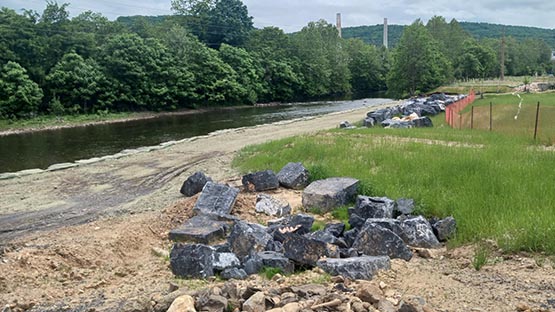The VA can be a confusing place. It is filled with updates and changes, so this article is meant to bring clarity on the new VA Appeals Improvement and Modernization Act.

As the number of appeals filed with the VA increases, it is common for the average wait time for veterans to receive decisions increases exponentially. In an effort to streamline the current backlog of appeals, President Trump implemented the Veterans Appeals Improvement and Modernization Act of 2017 (AMA), thus revamping the entire VA disability benefits appeals process. As a whole, AMA replaced the traditional “Legacy” appeals system on February 19, 2019.
Any new claims filed on or after February 19, 2019 will be worked on under the regulations of AMA. If you currently have pending appeals in the Legacy system and you did not opt your appeals into the RAMP program, they will continue to be worked under the Legacy system. The plan is for the VA to work all of the Legacy appeals until they are all completed or voluntarily moved to AMA. Because this process could take years to complete, so VA will be conducting reviews of appeals in Legacy and AMA simultaneously.
Under AMA, once a veteran receives a decision, he or she has one year from the date of the decision to appeal it. If the veteran decides to appeal the decision, he or she must choose between three appeal “lanes”: Higher Level Review, Supplemental Claim, or file a Notice of Disagreement (NOD) directly to the Board of Veterans Appeals.
Higher Level Review
In this lane, a senior VA adjudicator (called Decision Review Officers in the Legacy system) will perform a de novo review of your file and make a decision based on the evidence already of record. De novo means that the adjudicator will review your appeal without regard to prior decisions and make a decision based on their review.
There is no duty by the VA to assist in gathering additional evidence or records. In addition, no new evidence can be filed; the decision is made based on the existing evidence in the record. This lane can be utilized for obvious errors that could be easily rectified without the need for additional evidence.
Supplemental Lane
In this lane, new evidence is required to reopen a previously denied claim or to file for an increased rating of a service-connected condition. The evidence must be “new and relevant” to the claim; “new” meaning not previously submitted or received by the VA and “relevant” meaning significant and related evidence to the issue you are claiming. For example, the new and relevant evidence could be evidence of symptoms warranting an increased rating or a nexus opinion for service connection. In this lane, the VA has a duty to assist the veteran in developing or finding evidence for their claim.
NOD Direct to the Board
In the Legacy system, veterans had to wait to get a rating decision and appeal that decision with an NOD. After filing the NOD, veterans had to wait to receive a Statement of the Case. Only then could veterans appeal to the Board of Veterans Appeals (Board) by filing a VA Form 9. This process could take at least 3 years, and often much longer. AMA cuts out Statement of the Cases and VA Form 9s, providing veterans with the ability to appeal directly to the Board after receiving a rating decision. This change could potentially save a lot of time for more complicated issues that would likely not get granted at the initial decision level.
If veterans chose to file an NOD directly to the Board, there are three options for review:
- Direct Review: This lane will most likely be fastest path to the Board. It is a review by the Board based on the evidence of record at the time of the prior decision. This means that additional evidence cannot be filed and the veteran cannot request a hearing. The Board makes a decision based solely on the evidence of record.
- Evidence Submission: This lane allows for a submission of additional evidence within 90 days of filing the NOD. This lane does not allow for a hearing, so the Board makes their decision based on the evidence of record and any additional evidence filed within the 90 day period.
- Hearing: This lane will most likely be the slowest lane as the Board must schedule a hearing. Currently, nearly 70,000 veterans are waiting to be scheduled for a hearing at the Board. This means that new evidence can be submitted at the hearing or within 90 days after the hearing.
It is important to know your options moving forward with any VA appeals. We hope this article helped you!










